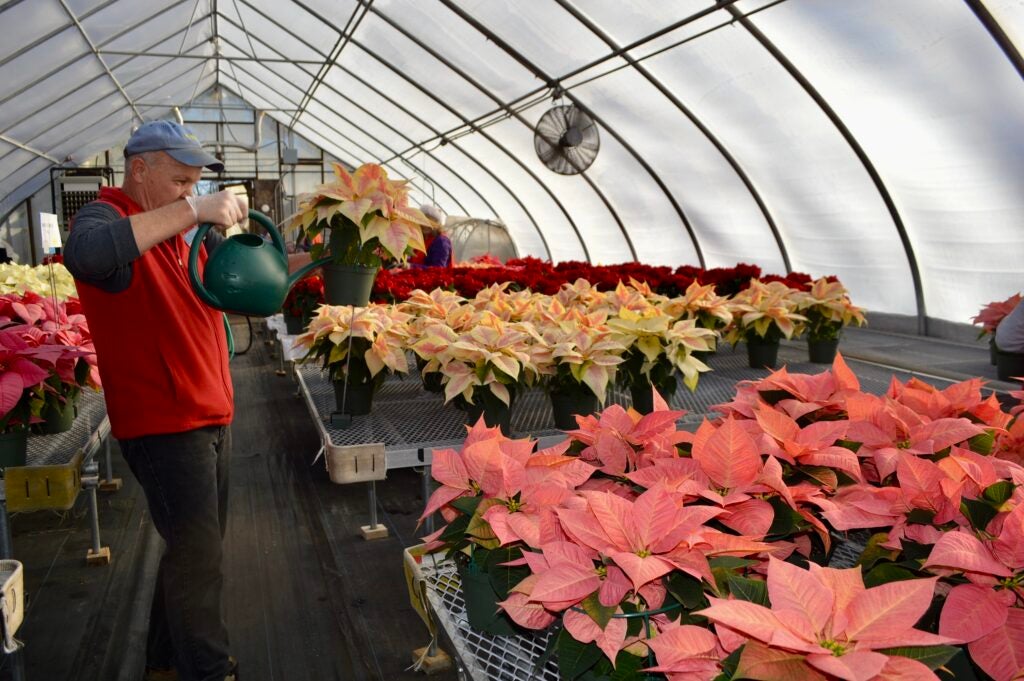KINGSTON, R.I. – Dec. 22, 2022 – Community libraries, senior centers, and food pantries around Rhode Island look a bit brighter these days, thanks to the URI Master Gardener Program’s poinsettia propagation project.
This year, in partnership with the Community Libraries of Providence, books about the plants and their cultural significance were read during story time, and plants were distributed to neighborhood attendees.
“The Community Libraries are a wonderful partner of ours – they bring people together and we look forward to expanding the story-hour program next year,” said Anne Mulready, URI Master Gardener and leader of the poinsettia propagation project.
Other donations went to The Rhode Island Veterans Home Community Center in Bristol, the Comprehensive Community Action Program, and several other organizations providing meals to seniors. Plus, the plants went to three high schools that have Future Farmers of America programs and one middle school with a greenhouse.

The plants first arrived at the Master Gardeners greenhouse in late July standing only about an inch tall. Gummen Orange and Ball Horticultural Company donated the plugs, which included an assortment of shades of reds, whites, and variegated. In exchange for the plugs, URI Master Gardener volunteers kept records of the growth progress and overall health of the plants as part of the North American Poinsettia Trials, in which they’ve participated for nearly 20 years.
“We tracked the height and width of the inflorescences. We also tracked how early the flower formed,” said Mulready.” Growers are especially interested in how a white plant did in the northeast. They play with genetics to try to develop a really bright white color. By shipping them to us, the plants are put under different lighting and heating conditions that influence how white a poinsettia gets. Then we send our records back to them as part of their research.”
FUN FACTS:
- The cuetlaxochitl originally had nothing to do with Christianity or Christmas, they were a sacred plant used in ceremonies to celebrate the birth of Huitzilopochtli, the Aztec sun god, during winter solstice. The Aztecs used cuetlaxochitl for a variety of purposes, including decoration and the production of red and purple dyes, as well as for medicines derived from the plant’s milky white sap.
- In 1828, cuetlaxochitl was taken from its native home and brought to the United States by Joel Roberts Poinsett, a U.S. ambassador to Mexico. Poinsett is celebrated for introducing the poinsettia to the United States and for co-founding the Smithsonian Institution. However, his legacy as a slave owner and his role in the displacement of countless Native Americans has led some people today to reject the name “poinsettia” in favor of the plant’s native name, cuetlaxochitl.
- Although poinsettias are not harmful to humans, the flowers should be kept out of reach of pets. Consumption can cause illness.
- Poinsettias do best in indirect sun for at least six hours a day. They like temperatures of around 68 degrees.
- What most people think of as the flower petals of the poinsettia are actually called “bracts” and are special leaves. The tiny yellow parts in the center of the bracts are the plant’s flowers.
- Learn more about the URI Master Gardener Program at https://web.uri.edu/mastergardener/
This story was written by Hugh Markey.

